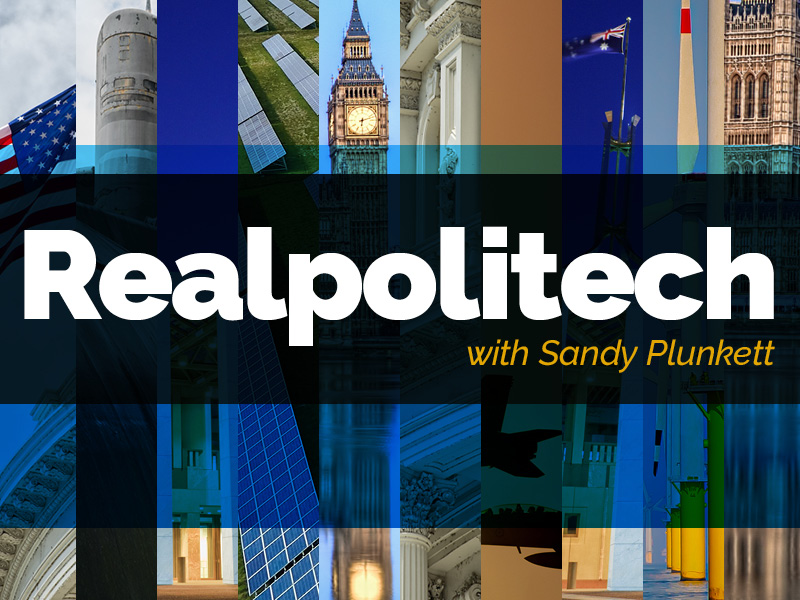The $940 million investment in Silicon Valley-based startup PsiQuantum jointly made by the federal and Queensland governments this week represents the first WTF moment of the recently announced Future Made in Australia era.
Apologies for resorting to the colloquial expletive, but it aptly summarises the reaction to a decision that is still shrouded in secrecy and that many of Australia’s smartest scientific minds can’t figure out the logic behind.
In trying to get his head around the why of the governments’ decision, Australia’s pre-eminent expert in artificial intelligence, Toby Walsh, cleverly wrote that the only way to understand it is to surrender to the bizarre physics of the quantum world and apply it to the macro world of Australian politics.
“It is well known that the quantum world is bizarre and uncertain. A photon is simultaneously both a wave and a particle. Schrodinger’s cat is neither dead nor alive but some strange superposition of states in which it is both dead and alive. And an electron can tunnel through an energy barrier larger than the energy it possesses,” said Professor Walsh, Laureate Fellow and Scientia Professor of AI at UNSW’s Department of Computer Science and Engineering.
“But what is less well known is that such quantum uncertainty extends from the microscopic up to the macroscopic world of national politics and funding.
“This is the only way to understand the Queensland and federal government’s recent announcement to invest $940 million in PsiQuantum, a Californian startup attempting to build a photonic quantum computer.”

For most of us whose understanding of quantum computing starts and ends with visions of zombie cats, the primary discomfort with the deal rests with the total lack of transparency of the governments’ decision-making process.
It is also about what it reveals about the Albanese government’s approach to priorities and picking winners in its much-touted new era of Australian reindustrialisation and which the Government has made clear taxpayers will fund in no small way.
InnovationAus reported that an investment in PsiQuantum was in the works as early as last November. It has consistently highlighted the secrecy of the decision and the lack of consulting with top scientists, including those on Australia’s National Quantum Advisory Committee (NQAC).
Federal Minister for Industry and Science, Ed Husic resisted all calls to provide any clarity both before and now, after it has been announced.
“I find it outrageous that the selection of PsiQuantum for this large quantum bet was decided last November by a secret expression of interest process,” wrote Professor Walsh. “You can’t tunnel past the conventional barriers to spending taxpayer’s money.”
In the new world of big taxpayer-supported industry and economic policy, conventional mores about what taxpayers should or shouldn’t know about how their money is being spent are being upended. That’s not sustainable.
So how should we understand this investment decision by Federal Labor and the Queensland government?
While some in the mainstream media initially cheered the deal, other leading scientists and AI experts say it is a big and risky bet on a theoretical solution and threatens to derail the years long efforts of competing and much lauded Australian quantum computing researchers and companies.
They also fear it could be a massive distraction and risk entrenching the nation’s already limp progress and relevance in a world increasingly driven by artificial intelligence.
“We are last in the OECD in terms of AI development and funding,” says Anton van Den Hengel, Founding Director of The Australian Institute for Machine Learning (AIML) and a Professor of Computer Science at the University of Adelaide.
Quantum computing and artificial intelligence are distinct, advanced and still emerging technologies that are so critical that every technologically sophisticated nation is in a race to fund and develop them at scale.
Very simplistically, you can think of them in terms of the hardware (quantum computing) and software (artificial intelligence) needed to power the next several decades of economic growth, sovereign security, and geopolitical power.
Another important difference is that AI — though very far from perfect — is already in use globally, and rapidly evolving in real time. AI development and use of language models, training and applications run over existing hardware (servers) housed in hundreds of data centres around the world and the many hundreds projected to come.
There is little doubt that a working quantum computer will be rocket-fuel to scientific research and discovery, future AI development and little things like being able to crack every code on the planet.
Standing alongside the Prime Minister and Mr Husic, Queensland Treasurer Cameron Dick pulled out the now over-used “moonshot” rallying cry.
“For Queensland, this is our moonshot, our Project Apollo,” he said.
But a working quantum computer is thought to be more than a decade away.
PsiQuantum’s Australian founders, Professors Jeremy O’Brien and Terry Rudolph claim their design (based on photonics versus silicon tech) will manifest anytime between next year and 2029. Which is big, if true. But the founder’s own ETA for a working computer keeps shifting and that’s not a confidence builder.
Australia’s Chief Scientist Dr Cathy Foley is a believer. She says two years of assessing PsiQuantum’s photonic-design theory convinced her that it is a “country mile ahead” of rivals.
But it still doesn’t mean a working computer will manifest in any near-term timeline.
The nearly billion dollar bet on one specific – yet unbuilt – quantum computing solution compares to a tiny $41 million the government has invested to date in AI.
And that paltry funding has been dedicated to designing ethics frameworks, versus AI applications and infrastructure development, or supporting the new class of AI-driven entrepreneurs. A new CSIRO report says most Australian boards lack the expertise to handle AI risks and opportunities.
Meanwhile, the US and China are spending trillions of dollars on AI and all the layers of supporting infrastructure at a pace and scale that is unprecedented.
Canada, considered Australia’s peer, announced it will commit C$2.4 billion (A$2.7 billion) to its AI sector, including C$2 billion to build and provide access to computing capabilities and technological infrastructure for Canada’s AI researchers, startups, and scaleups.
Which is why, in trying to understand the big bold quantum hardware investment versus its apparent disinterest in fostering a dynamic AI sector, Realpolitech has been musing on a different principle – Occam’s Razor.
Among competing hypotheses, Occam’s Razor is often paraphrased as the “the simplest explanation is usually the correct one.”
It is possible that in the context of the PsiQuantum deal, the simple explanation is purely political: For federal Labor, the optics around AI — amid predictions of massive disruption to jobs and social cohesion and the unrelenting fearmongering that AI will usher in human extinction or slavery — are just too politically messy if not dangerous to deal.
Or, put another way, this federal government, which campaigned and is governing on its 21st century Australian reindustrialisation mission, is afraid of AI.
If that sounds over-egged, consider this:
More than half the nation has a deep mistrust of AI. According to an Ipsos poll, Australia is the “most nervous” of 31 countries surveyed about the impact of AI on their jobs and on society.
Some 69 per cent of Australians, compared to just 23 per cent of Japanese, were worried about the use of AI. And only 20 per cent thought it would improve the job market.
The survey of 22,816 adults under 75 was conducted between May 26 and June 9, 2023, on the Ipsos Global Advisor online platform in 30 countries and mainly face to face in India.
Only 40 per cent of Australians said they were excited by AI, compared to an average of 54 per cent globally. Nearly a third of Australians think AI will replace their current job and only a quarter think AI will be good for the economy.
Despite a surge in new AI applications, Australians who said they knew or understood the types of products and services that use AI was well below the 50 per cent among our international peers.
Ipsos Australia director David Elliott, said: “Australians are overwhelmingly nervous about the rapid evolution of AI and the impact it will have in coming years on the domestic economy and the job market.”
“AI has long had an image problem in Australia. People are generally afraid of it; don’t understand it or how it works; and are worried about the safety and security of their personal data.”
Other surveys show more than 80 per cent of Adult Australians want the government to take stronger action to ensure its safe development and use.
That helps explain all the ethics-based AI work, which includes the setting up of the AI Experts Group, a 12-person panel (including Toby Walsh) to guide the introduction of “guardrails” for the use of AI in high-risk settings. The group was announced in February and is expected to complete its work in June.
The ethics and safety frameworks being put in place are essential work, all agree. But others caution the nation’s AI’s economic and industry potential is being captured by ethics experts.
Any heightened political sensitivity to Australian’s perception of a scary, uncertain AI future contrasts with the gushing excitement that was palpable when the government’s PsiQuantum equity buy was announced.
And it is in some way connected to our historical cultural resonance with hardware — big machines in mining, construction and agriculture for instance — and our careless dismissal of software, the stuff that ate the world nearly two decades ago. Successive Australian political leaders have demonstrated this affliction.
Since winning the election in May 2022, the Labor government has been busy presenting itself as something very different from previous governments; the thoroughly modern 21st century government to steer the nation successfully through a clean energy-driven reindustrialisation and advanced manufacturing renaissance.
But to many, the PsiQuantum deal – and the way it was done – reveals this government has a nasty blind spot that could prove fatal as additional investment choices and sizes come down the line. But not before vast sums of money are committed to feed the green energy superpower and quantum computing domination dreams.
The federal Budget will bring some additional clarity one way or the other later this month. It may include a clear statement and funding commitment to ensuring Australia has some relevance and value in the AI era. AI sector leaders’ confidence in that happening is low.
Anton van den Hengel points to a new paper produced by Kingston AI Group, a group of 14 AI professors and researchers from eight Australian universities.
The economic modelling in the report, Australia’s AI Imperative: the economic impact of artificial intelligence and what’s needed to further its growth, says that between 2023 and 2027, Australia could face an opportunity cost of 1.4 per cent (or A$35.7 billion) of GDP per year if it fails to introduce AI systems to world standards in key industries, including technology, finance, healthcare, education, and government.
The report also argues that greater utilisation of AI in key Australian industries will lead to a short-term boost in GDP of more than $200 billion per annum and the creation of an additional 150,000 jobs during the period 2023-2030.
Those figures may be low or high. But one thing is for sure, it’s impossible to imagine an integrated quantum industry in Australia without a thriving and competitive AI industry first.







